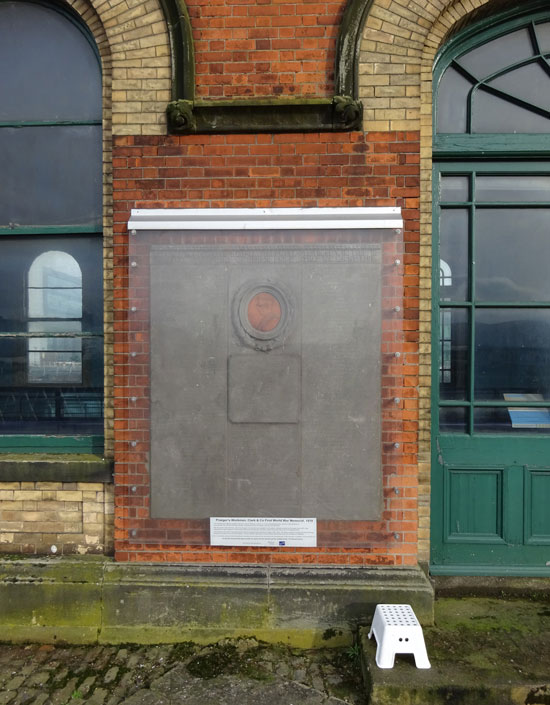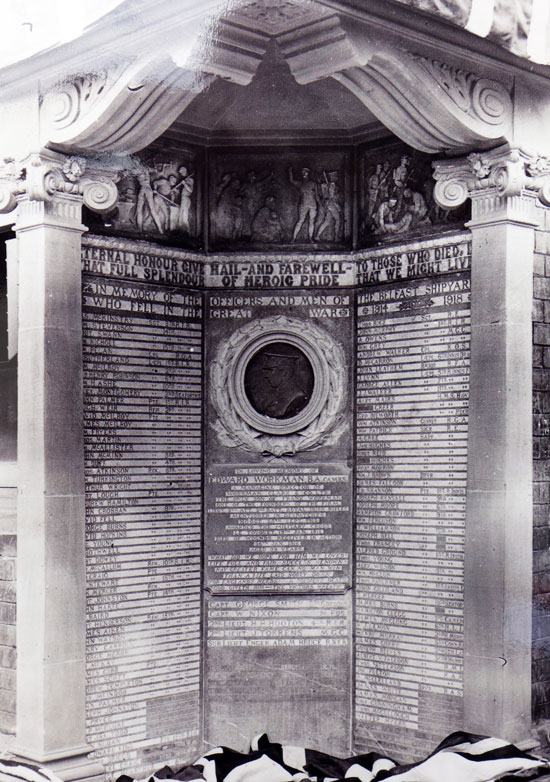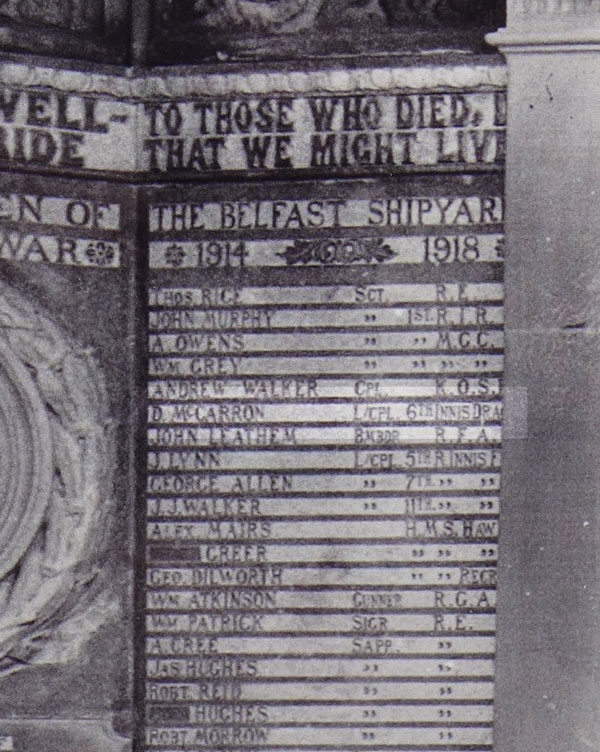![]() In memoriam
In memoriam ![]()
Private David John McCarron
David John McCarron was born on 12 September 1878 at Frank Place, Belfast, the fourth of seven children of labourer and flax scutcher David John McCarron and his wife Sarah Ann (nee Thompson). His mother died when he was just nine years old. Four years later his father married Mary Thompson, Sarah Ann's sister, the couple having one child.
At some stage prior to the war McCarron served in the 8th (King's Royal Irish) Hussars, being discharged on the termination of his engagement.
On 24 March 1902 he married Annie McGrath at St Anne's Parish Church, Belfast. The couple had one child, Maria, born at 24 Frankfort Street on 27 June 1903.
In the years prior to the war McCarron worked as a labourer, and as a red leader in the Belfast shipyards.
On 10 October 1914 he enlisted in the 6th (Inniskilling) Dragoons Service Squadron at Belfast (No. UD/24 – later Corps of Dragoons No.21218). He gave his age as 35, a year less than his true age. On 6 October 1915 McCarron embarked for France with his squadron, which was then serving as divisional cavalry to the 36th (Ulster) Division.
On 2 January the following year he was fined 21 days' pay for disobedience of squadron orders and being drunk on active service.
In June 1916 the Inniskillings squadron came together with C and F Squadrons of the North Irish Horse to form the 2nd North Irish Horse Regiment. In the previous month, however, McCarron had been posted to 'B&C' Depot and classified 'PB' – permanent base – probably due to his age and deteriorating health. On 11 July he was attached to Headquarters of the 2nd Echelon as batman to Captain Roche-Kelly of the Army Veterinary Corps. Six weeks later he was attached to headquarters of the 1st Echelon, near Amiens.
While there, in October 1916, McCarron fell ill, spitting blood for three days. He was evacuated to Ireland, where he was posted to work at the Workman Clark shipyards in Belfast.
McCarron's health continued to deteriorate. A medical board at Enniskillen on 3 March 1918 found he was suffering from arterial degeneration with dilation of the heart – spitting blood, bronchitis, shortness of breath and rapid heart action. "These symptoms began in Oct. 1917 & he reported to Military Barracks Belfast Oct. 26th or 27th – he was advised to continue attending his civilian doctor."
The board found that the disease had been aggravated, but not caused, by his military service. They found him 60 per cent disabled and permanently unfit for further service. On 4 April 1918 McCarron was discharged as permanently unfit (paragraph 392 xvi King's Regulations) and granted a pension. His military character was recorded as good.
McCarron died of heart disease at his home, 4 Athens Street, Belfast, on 4 July 1918. He was buried in the Belfast (Dundonald) Cemetery, F.5 grave 39. His name is inscribed on the Workman Clark shipyard memorial (below).



McCarron's half-brother Samuel served in the Royal Army Medical Corps during the war and in Iraq in the 1920s.
At the time of Private McCarron's death, the fact that he qualified for commemoration as a casualty of the war was overlooked. This was recently corrected by the Commonwealth War Graves Commission following a submission by Nigel Henderson via the In From The Cold Project.
First image courtesy of Linda Boal.
This page last updated 17 January 2023.
